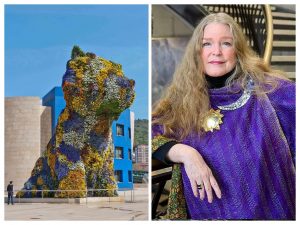
Once a prosperous manufacturing center of steel and shipbuilding with a thriving, crowded port, the very old city had become a post-industrial cemetery. Crime and public disruption. Factories and houses abandoned. Population loss, poverty and inequality. Decay all around. Sewage and other pollution in its rivers and harbor.
Baltimore 2023?
Bilbao, in northern Spain, 25 years ago. Today it’s one of the most livable and visited cities in all Western Europe. We flew there Thanksgiving week (one of the best cheap international travel weeks; $600 RT) and were gobsmacked by the vibrancy and life of a revitalized medium-sized place as cosmopolitan in its way as Chicago or San Francisco. We stayed across from the voluptuous Frank Gehry-designed Guggenheim Museum. We ate gorgeous food and drank local wine at crowded waterside cafes. The city is pulling in tens of thousands of tourists and new residents. It is, today, a great place to be. And it started with the Guggenheim Bilbao, a partnership between the New York museum and city officials to build a world-class art center on a former toxic site.
The mayor of Baltimore just handed a local real estate developer $1 million of our tax dollars, no questions asked, no bidding involved, to help him begin to redevelop our sad and empty downtown Inner Harbor. While the developer is decent and successful, there is nothing in his portfolio that hints of renaissance.
Is there a master plan – something bigger and even more original than the thinking that James Rouse brought to the task of making the Inner Harbor a showplace? The founder of Baltimore’s American Visionary Arts Museum has the beginning of a strategy. Rethinking Baltimore’s Inner Harbor for Enduring and Dynamic Success appeared on a Baltimore website while we were in Spain. “I warn against any typical developer plans to just refurbish the two existing pavilions, no matter how tastefully, then install new retail and food tenants, and call it a day. The money will be quickly wasted,” says Rebecca Hoffberger.
“I don’t pretend to have all the details, just the vision,” she said. “We need something different. Something better.” If you click on and read her article and want to comment or respond, click here.
–Bill Hamilton
